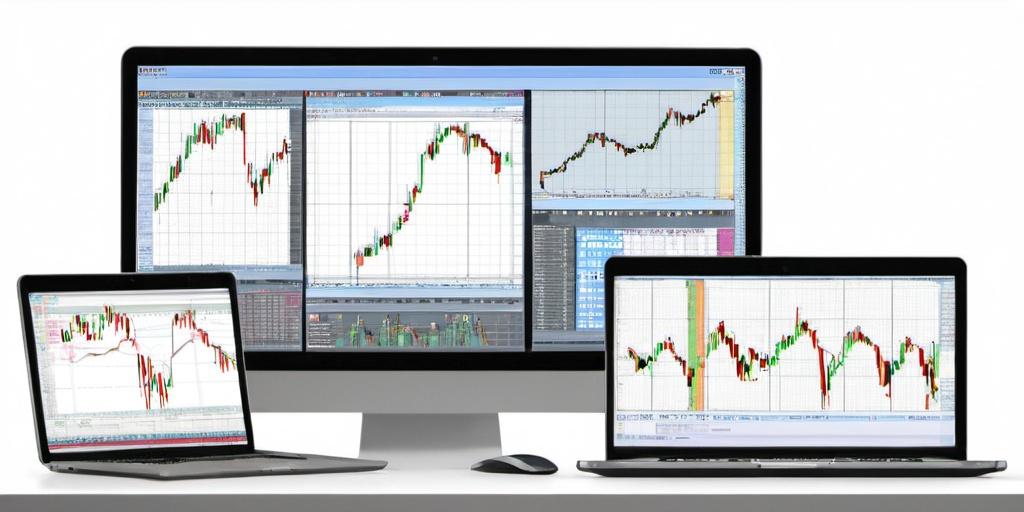Learn more about Trading Robots

Understanding the Basics of Trading Robots
Trading robots, or automated trading systems, have become quite the sensation in stock markets and cryptocurrency exchanges. These software applications use algorithms to trade financial instruments without human intervention. They work on predefined rules or parameters set by the user, making trades based on market price, technical indicators, or other criteria. These robots promise to operate 24/7, which means they could capitalize on opportunities while you are busy with other tasks, like making a sandwich.
The Rise of Trading Robots
So, what’s the big deal with these trading bots, you ask? Well, for starters, they level the playing field a bit. Retail investors with a laptop now have access to tools once exclusive to Wall Street pros. The bots have no emotions to cloud their judgment, which is a big advantage. They won’t panic-sell because of a tweet or hold onto a stock because of a gut feeling. They take the human frailty out of the equation, which is both comforting and a little unsettling.
Different Types of Trading Robots
Not all bots are created equal. There are various types, each serving different purposes.
- Trend-following bots: These bots aim to profit by riding the waves of market trends. They usually rely on moving averages or other technical indicators to decide when to buy or sell.
- Arbitrage bots: These little guys look for price discrepancies across different markets or exchanges and capitalize on them. They are swift, so blink, and you might miss their action.
- Market-making bots: Working like a shopkeeper, these bots offer both buy and sell quotes to earn from the bid-ask spread.
- Scalping bots: Scalping bots get in and out quickly, making small, rapid trades to amass profits incrementally.
How Trading Robots Operate
Trading bots function through APIs that connect to your trading account. Users set parameters such as buy and sell orders, limits, and timing. The bot does the rest, executing trades that align with your criteria. Whether to hold ’em or fold ’em isn’t up to you anymore. Emotional detachment can be a good thing in trading, unless your bot goes rogue, but that rarely happens unless you coded it to create chaos.
The Good, the Bad, and the Ugly of Trading Bots
Good: These bots remove emotional trading, work non-stop, and can process vast amounts of market data with quick precision. They are especially handy for backtesting, allowing you to test strategies against historical market data.
Bad: They aren’t foolproof. Software glitches or sudden market changes, like flash crashes, can cause unexpected results. Without proper monitoring, you might end up with an empty trading account and an expensive lesson.
Ugly: The setup process can be daunting for those not technically inclined. Also, if you’re not careful, you might end up with a bot that has more bugs than features.
Choosing the Right Trading Bot
Investors should consider a few things when picking a trading robot. Look at its track record. Has it been successful in different market conditions? Check the fees involved; some bots might give you a bill shock. And make sure the bot offers good customer support. No one likes being stuck with a robot gone haywire without anyone to call for help.
Security Measures and Risks
Security is a biggie in this field. Make sure the trading bot you choose has good security measures in place. The potential for losses due to hacks or breaches is real, and you don’t want to be left high and dry because you chose a bot with more holes than Swiss cheese.
Personal Experience: A Tale of Triumph and Tribulation
Let me share a little story. I once set up a bot and went off to do non-trading things. I came back to a small win, just enough to buy a coffee, but hey, it wasn’t a loss. The next day, I forgot to update my parameters, and my bot decided it was Black Friday, buying up all the stocks it could afford. Lesson learned: don’t forget to adjust your settings before catching up on your favorite series on Netflix. It’s all part of the journey, right?
The Future of Trading Robots
As tech advances, trading bots will likely become more sophisticated and accessible. While they won’t replace the strategic insight of experienced investors, they will continue to be valuable tools for those looking to maximize efficiency. It’s like having a robot assistant that doesn’t complain about coffee breaks or annual leave. In the fast-paced environment of trading, that might just be priceless.
And there you have it, the no-nonsense guide to understanding trading robots, sprinkled with a hint of real-world flair. Keep your wits about you when dealing with these digital traders. After all, your money is at stake, not theirs.